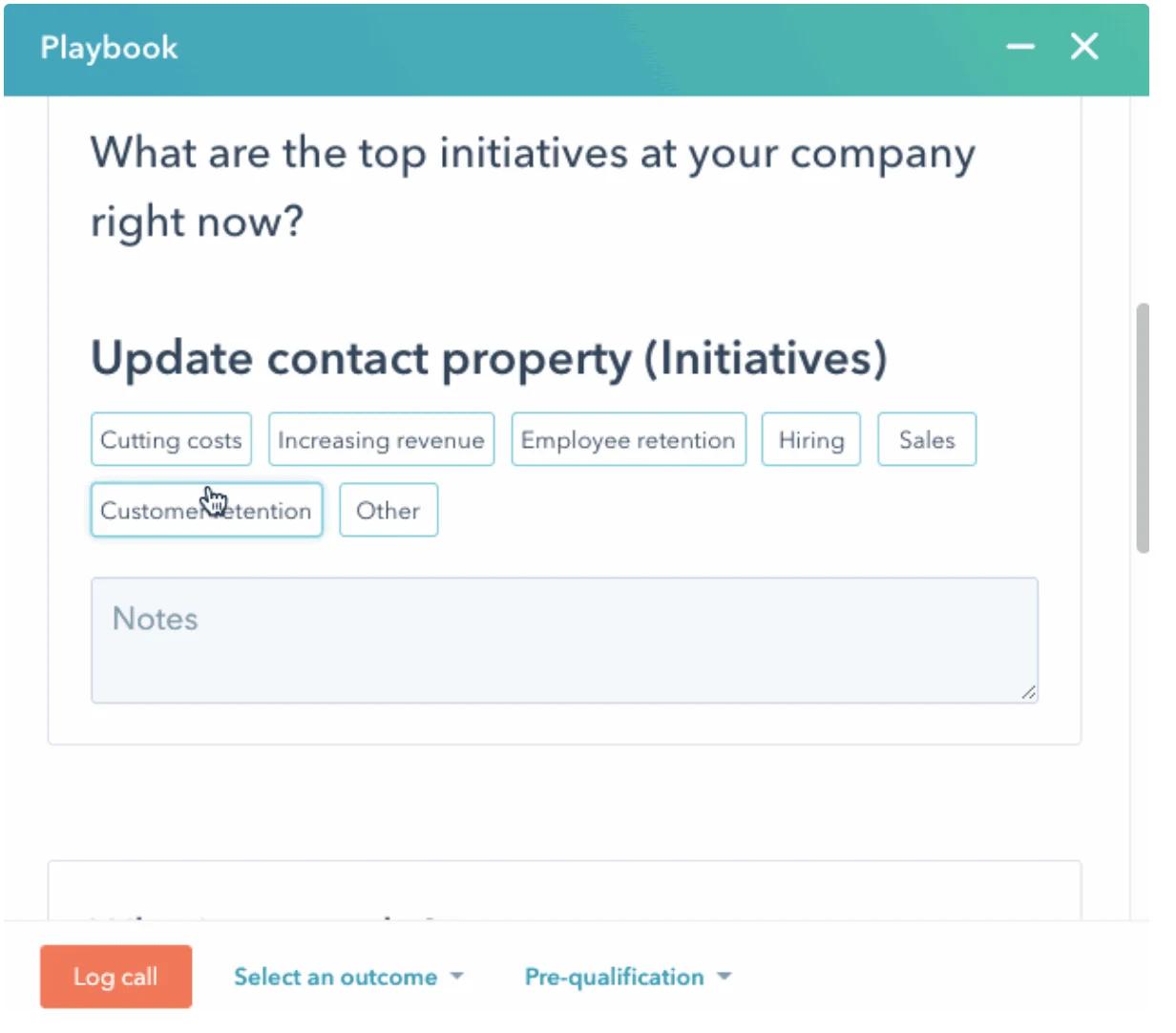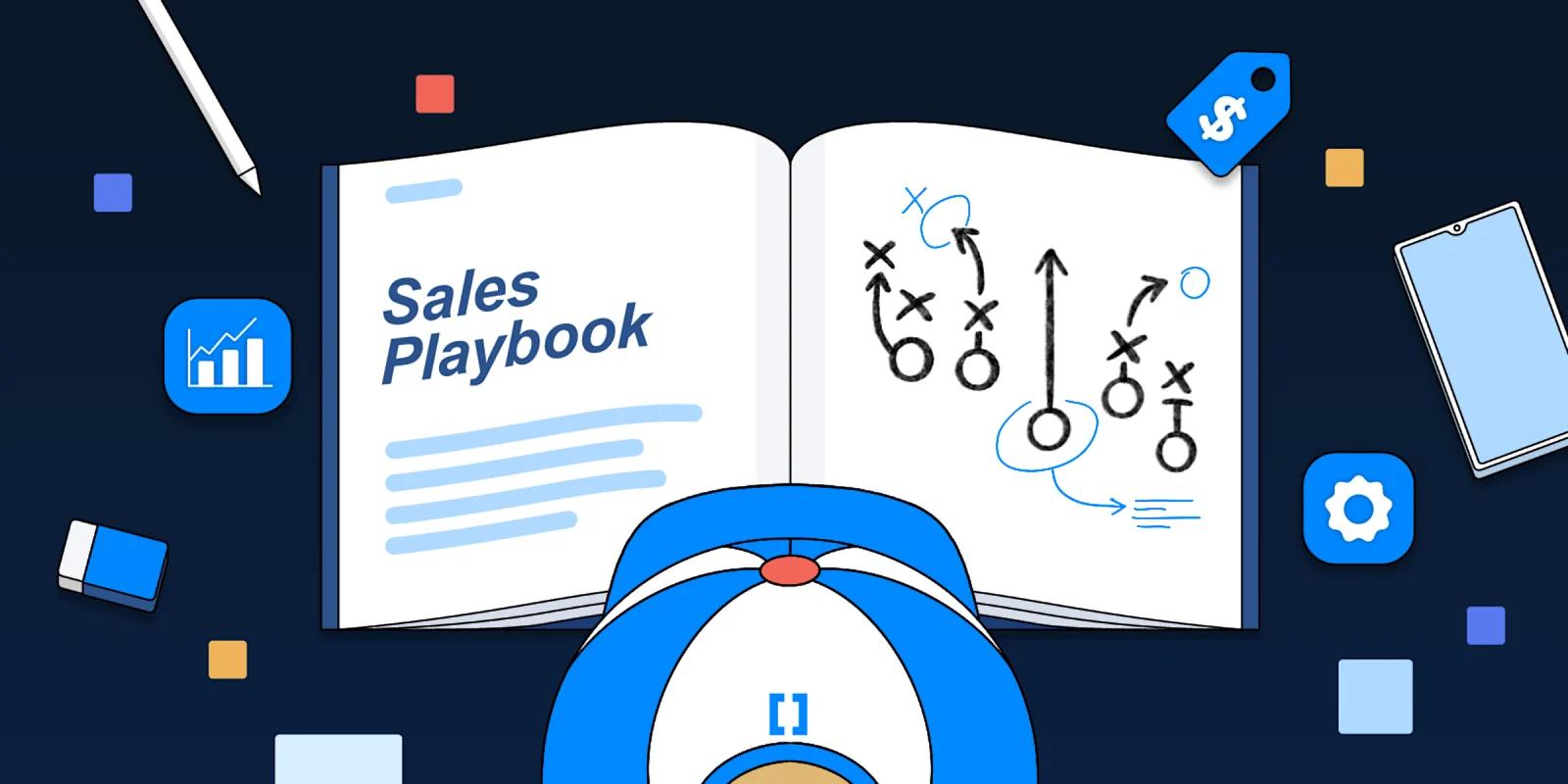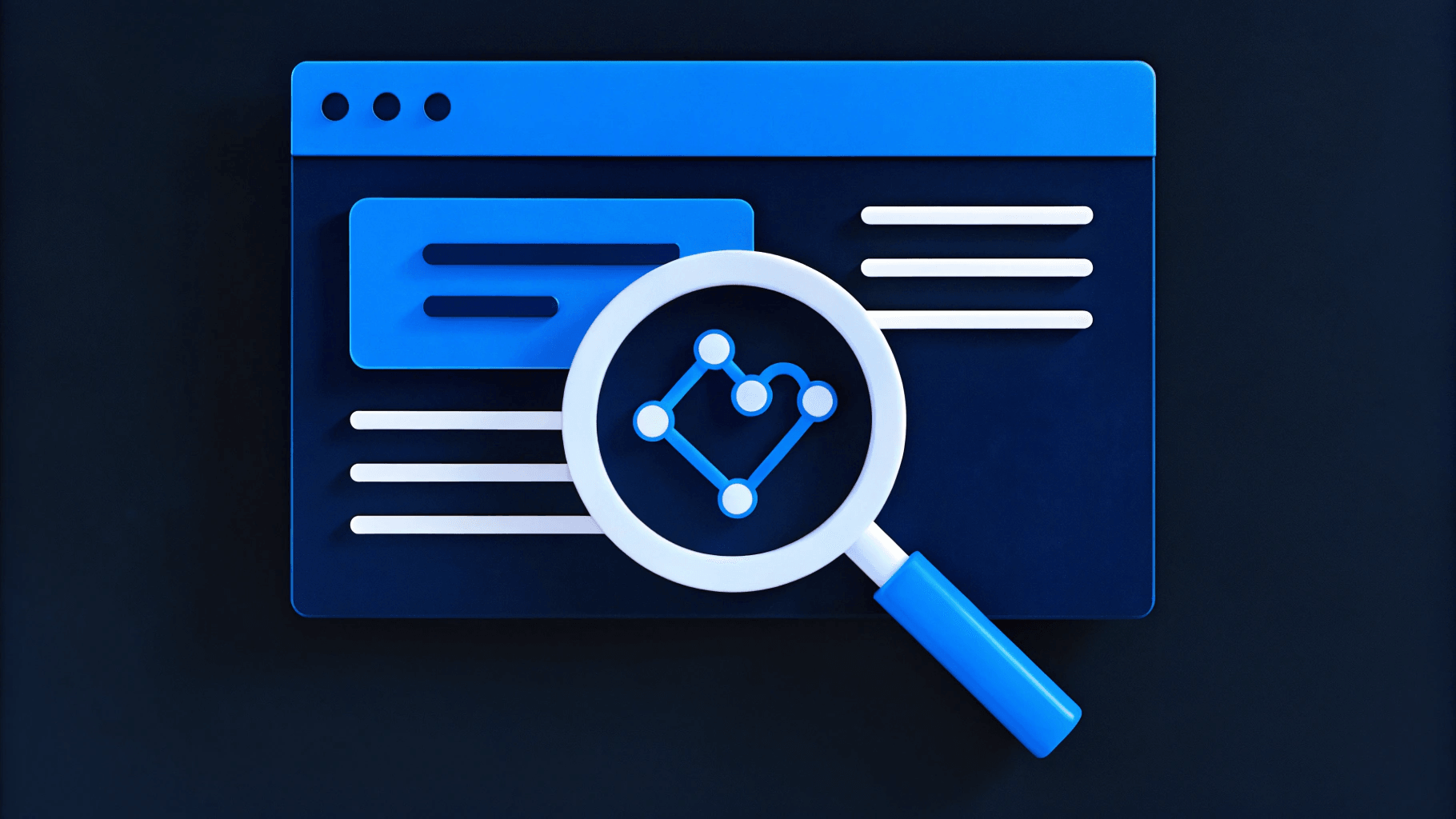Sales teams at disruptive SaaS companies face resilient incumbent competitors and a significant learning curve when selling software solutions to new customers.
As SaaS companies scale, so must their sales team. With this growth comes even more challenges like managing customer stories, collateral, and teams across offices.
So how can software companies increase revenue and lead conversion rate?
One way is to create sales playbooks to train, support, and guide salespeople across your organization.
What is a Sales Playbook?
A sales playbook is a document that sales teams use to implement best practices, sales tactics, and strategies throughout the buyer’s journey.
Throughout the stages of the sales process, there are different ways the salesperson should approach the lead, and unfortunately, there is no one-size-fits-all sales strategy.
Sales playbooks are a vital tool in your RevOps tech stack that will help sales development representatives (SDRs) understand what they should do during specific stages of the sales process, such as prospecting, cold calling, follow-ups, and pitches.
What are HubSpot Playbooks?
HubSpot Playbooks are a new feature that lets customers create interactive content cards with text, links, images, videos, and Q&A boxes so sales development representatives can access key information and take notes during sales calls.
HubSpot’s playbooks enable SDRs to share case studies, record responses to questions, share tutorial videos, and overall provide more value to prospective customers.
HubSpot’s new tool makes it simple for sales leaders to review recorded responses, gain insights, and ultimately help direct reports convert more leads into customers.
How to Create HubSpot Playbooks
Ready to create your first playbook? Let’s get started.
Step-by-Step Guide
- Navigate to the Playbooks Tool: Log in to your HubSpot account and go to the playbooks tool.
- Create from Scratch or Use a Template: Choose whether to start from scratch or use one of HubSpot’s templates.
- Add Interactive Elements: Include videos, links, and other interactive elements to make your playbook engaging.
- Insert Personalization Tokens: Personalize your playbook with tokens that pull in specific information, like the prospect’s name or company.
Using AI in Playbooks
HubSpot’s AI content writer can help you generate content for your playbooks. Use it to:
- Generate initial content drafts.
- Customize AI-generated suggestions to fit your needs.
Logging Playbook Submissions
Configure engagement types and log interactions to track usage. This helps you understand how often playbooks are used and their effectiveness.
Recommendation Rules
Set rules based on CRM properties to recommend the right playbook for each situation. Optimize playbook recommendations to ensure your team always has the best resource at hand.
Creating a playbook might seem daunting, but with these steps, you’ll have a comprehensive guide that your team can rely on. And the best part? You can tweak and refine your playbooks as you gather data and feedback, making them even more effective over time.
How to Use HubSpot Playbooks in CRM Records
You’ve created your playbooks, but how do you actually use them in your day-to-day CRM activities? Let’s break it down to make sure you’re getting the most out of these tools.
Accessing Playbooks
First things first, you need to know where to find them. Open any contact, company, deal, or ticket record in your HubSpot CRM. You’ll see the playbooks option right there. Easy access means no more wasted time searching for resources.
Logging Interactions
While on a call or in a meeting, use the playbook to record notes and responses. This ensures all interactions are logged accurately, providing a clear record for future reference. Trust us, your future self will thank you.
Viewing Analytics
HubSpot provides robust analytics to track playbook usage. Dive into these reports to see which playbooks are most effective and where there’s room for improvement. Data-driven insights help you refine your strategies continually.
Integrating with Slack
If your team uses Slack for communication, you’re in luck. You can search and view playbooks directly in Slack using specific commands. This integration makes it super convenient to access playbooks without leaving your chat.
Automating Workflows
Set up workflows triggered by playbook logs. For example, when a sales rep logs a playbook interaction, it can automatically trigger a follow-up task or email. Automation ensures nothing falls through the cracks and keeps your processes running smoothly.
By integrating playbooks seamlessly into your CRM records, you streamline operations and make sure your team has the tools they need right at their fingertips.
Advanced Strategies for Optimizing HubSpot Playbooks
You’ve got the basics down, but let’s take it up a notch. Here are some advanced strategies to get even more out of your HubSpot Playbooks.
Customize Playbooks for Different Teams
Tailor your playbooks for sales, marketing, and customer service. Each team has unique needs, and customized playbooks ensure relevance and effectiveness.
Leverage Data Insights
Use HubSpot’s analytics to refine your playbooks. Look at what’s working and what’s not, and make data-driven improvements. The more you know, the better your playbooks will become.
Regularly Update Playbooks
Keep your content current and relevant. Regular updates based on feedback and performance data ensure your playbooks remain effective. Don’t let them become outdated.
Integrate with Other HubSpot Tools
HubSpot Playbooks work best when integrated with other HubSpot tools like the CRM, Marketing Hub, and Service Hub. This holistic approach enhances overall efficiency and effectiveness.
Provide Continuous Training
Offer ongoing training for new and existing playbooks. Ensure all team members are proficient and comfortable using them. Continuous training keeps everyone on the same page and maximizes the benefits of your playbooks.
By implementing these advanced strategies, you can elevate your playbooks from good to great, driving even better results for your team.
Why are Sales Development Playbooks Important?
Sales development playbooks are great for sales teams at B2B SaaS companies because they help set clear expectations such as:
- How to describe your product and the solutions it provides
- How to explain the benefits of your product vs. competitors
- How to present a product demonstration
- How to respond to common objections
- How to structure the agenda for each sales call
A sound revenue operations strategy considers people, data, and processes. Without clear guidance on these topics from sales leaders, SDRs will struggle to consistently position, pitch, and persuade leads to buy your product.
Whether a sales rep is experienced or brand new, a structured sales playbook helps:
- Align SDRs and managers with company-wide goals
- Onboard new team members
- salespeople answer their own questions
- Boost salesperson confidence
- Free up time for management
Types of Sales Playbook Templates
Let’s look at 3 common types of sales playbooks: prospecting, meetings, and coaching.
1. Prospecting Calls
When salespeople know their customers, their customer’s problems, and how the product they're selling resolves those problems, prospecting calls can feel like a doctor treating an annoying injury.
By using a sales playbook for prospecting calls, a sales rep can confidently:
- Ask the right questions
- Quash common objections
- Hit pressure points
- Express empathy
- Educate prospects
- Guide the next steps
- Follow up in a timely manner
A sales playbook for calls removes uncertainty and helps salespeople win more deals.
2. Client Meetings
Client meeting playbooks are similar to prospecting calls, but instead of nurturing leads toward closing a deal, they are built to make progress toward goal completion.
Meeting playbooks should be cover agenda items for each call including:
- Status updates on follow-up tasks from the previous meeting
- Share updates on this week's deliverables
- Surface any potential blockers that may inhibit goal completion
- Review upcoming deadlines and milestones
- Discuss tasks for the next sprint
3. Sales rep coaching
Whether you're joining a high-growth SaaS company or joining a startup looking to grow, this transition as a brand new sales rep can feel scary.
You need to learn a whole new product, audience, team dynamics, and how to engage with management quickly enough to start contributing to the team's sales goals.
With the right sales training playbooks, onboarding doesn’t have to be intimidating for new hires or frustrating for sales managers. Here are a few must-have training tasks in your sales onboarding playbook:
- Shadow team members on sales calls
- Attend team meetings
- Listen to recorded sales conversations
- Complete sales training on company tools
- Read product documentation and guides
Once finished, SDRs will be prepared to take on their own prospecting and sales calls.
These were just a few playbooks that sales managers can build to increase their team’s revenue stream. Here are a few others that could improve your sales operations:
- How to conduct follow-ups
- How to scope a new project
- How to turn down a customer
- How to re-engage cold contacts
- How to present solutions
- How to demo products
- How to nurture prospects
- How to upsell a customer
3 Must-Have Sales Playbook Templates
Here are three templates from which any sales team could benefit. For a deeper look at sales playbook templates, especially for supporting remote sales teams, peruse HubSpot's "Sell from Anywhere" learning center.
1. Sales template for prospecting calls
Here is a cold email template from Pipedrive for an effective sales playbook script:

sales-playbook-pipe-drive-email-template
Need more information? Watch this HubSpot playbook demo for sales calls.
2. Sales template for client meetings
Alright, so you’ve used playbooks throughout the prospecting battlefield, and successfully converted your prospect into a lead.
Congrats!
However, this doesn’t mean that this is the end of your playbook's journey.
Although playbooks are commonly used during the scouting phase, they can also be used during the discovering phase. For instance, at Webstacks, once we’ve landed HubSpot onboarding prospects as clients, we jump right back into playbooks.
During a Kickoff Call with our brand new client, we use a HubSpot playbook that outlines the most important agenda items to address during the call.
This new client kickoff playbook ensures that the call goes smoothly, that the time we spend with the client is productive, and we leave a meaningful first impression.

sales-development-playbook-template-for-onboarding-new-clients
Whether you’re a trainee or a seasoned employee, HubSpot playbooks are a sure-fire way to lead your client meetings with confidence.
Your customers have chosen to work with your company for a reason, and much of this has to do with the trust they have in your company’s consulting and technical abilities.
By using HubSpot playbooks to outline your client meetings with clear, straightforward agenda items, you will:
- Know what topics you’ll be discussing (so you can prepare beforehand),
- Know how much time you want to spend on each topic
- Be able to take notes and refer back to them in the future
While playbooks may start in the sales department, once you start deploying them, they can quickly be adapted to support marketing and customer service departments.
3. Sales template for salesperson training
Here is a link to download HubSpot’s top recommendations for creating the best sales playbook, which is perfect for salesperson training.
Why should sales leaders use a sales coaching playbook?
Would you like to get an hour of your time back in your day? What about a couple of hours back in a week, or an extra day every month?
Sales leaders who use coaching playbooks stand to recover hours of time back from teaching new hires your sales process, outlining tasks they need to complete during their first two weeks, and answering common questions.
Here are some common FAQs that can be quickly answered through playbooks:
- “What’s the best way to open a call?”
- “What should I say when they ask me about ____?”
- “What’s a good rebuttal when they say they don’t need our product?”
Playbooks are also ideal for coaching because high-performing reps can add in customer experience techniques proven to be effective at converting leads. By following these techniques, sales reps will be able to improve their performance and help their team hit their numbers, which in return will increase overall ROI.
Sales coaching tools to ramp up your sales team
This screenshot from HubSpot exemplifies the interactive content cards that a rep may be looking at during a sales call while using a playbook:

sales-playbook-template-interactive-content-card-from-hubspot
This also shows the tools that playbooks offer including the sales rep prompted question and the prospect’s response. This tool is handy because it allows the same prompts to show up for each prospect, but the rep would be customizing the answers to this playbook deck according to this specific prospect’s response.
Other tools that are great for sales coaching include:
- Links
- Images
- Videos
- Q&A boxes
Each of these user-friendly attributes can be added to your sales playbook to minimize the learning curve for new hires, and to be easily accessed in the future.
At Webstacks, we specialize in creating high-performance playbooks tailored to your needs. Schedule a brief discovery call with us today to see how we can help you achieve your business objectives.




